SMRT Poster Presentations
SMRT Poster Awards Session
ISMRM & SMRT Annual Meeting • 15-20 May 2021

| 02:00 - 03:00 | Moderators: |
| Winner: President's Award | |||
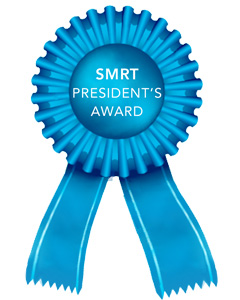 |
S11.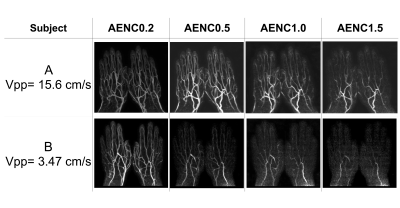 |
Non-gated and non-enhanced MR Angiography of the Hand using enhanced acceleration selective arterial spin labeling (eAccASL)
Misaki Saito1, Shuhei Shibukawa1, Natsuo Konta1, Takuya Hara2, Takakiyo Nomura2, Makoto Obara3, Isao Muro1, and Tetsu Niwa2
1radiological technology, Tokai university hospital, Isehara, Japan, 2Tokai University School of Medicine, Isehara, Japan, 3Philips Japan, Tokyo, Japan
This study was conducted to optimize the enhanced Acceleration-Selective Arterial Spin Labeling (eAccASL) for non-gated hand MRA. The MRA images obtained using four acceleration encoding (AENC) were assessed by visual evaluation for arterial depiction and venous contamination. The blood flow velocity obtained by phase-contrast cine was compared with the visual evaluation. It was found that the smaller the AENC (i.e. stronger motion sensitize gradients), the higher venous contamination and higher arterial visualization. The tendency of high visual evaluation was found in subjects with fast blood flow. The AENC of 0.5 or 1.0 was optimized for non-gated MRA of the hand.
|
|
| Winner: Clinical - 1st Place Oral Proffered Paper | |||
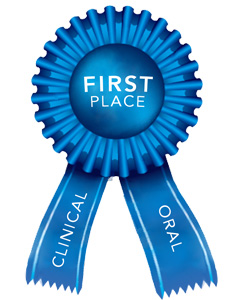 |
S80. | A finding of Female Adnexal Tumour of probable Wolffian Origin (FATWO) on magnetic resonance imaging and histology - a rare neoplasm: Case report
Petronella Samuels1, Paul Scholtz2, Judith Whittaker3, and Sally Candy4
1Cape Universities Body Imaging Centre, University of Cape Town, Cape Town, South Africa, 2Department of Radiology, Morton & Partners Radiology, Cape Town, South Africa, 3Anatomical Pathology, Lancet Laboratories, Cape Town, South Africa, 4Division of Diagnostic Radiology, Groote Schuur Hospital and University of Cape Town, Cape Town, South Africa We present the MRI and histological findings in a case of Female Adnexal Tumour of Wolffian Origin (FATWO) / WAT (Wolffian Adnexal Tumour), a rare adnexal neoplasm. This mass, located in the right broad ligament demonstrated diffusely low signal intensity on both T2WI and T1WI, peripheral restriction on DWI, peripheral enhancement and central hypo-enhancement post Gadolinium. An awareness of this condition and its MRI findings will ensure that appropriate immunohistochemical staining is performed. The presence of restriction may be helpful in predicting tumour behaviour, surgical approach and postoperative management. |
|
| Winner: Clinical - 2nd Place Oral Proffered Paper | |||
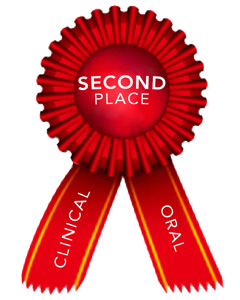 |
S4.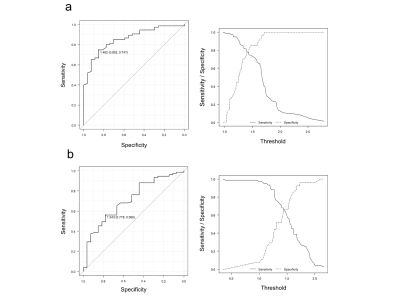 |
Investigation of new assessment method for the liver magnetic resonance imaging
Yasuo Takatsu1,2, Masafumi Nakamura3, Satoshi Kobayashi4, and Tosiaki Miyati4
1Department of Radiological Technology, Faculty of Health and Welfare, Tokushima Bunri University, Sanuki-city, Japan, 2Department of System Control Engineering, Graduate School of Engineering, Tokushima Bunri University, Sanuki-city, Japan, 3Department of Radiology, Otsu City Hospital, Otsu, Japan, 4Division of Health Sciences, Graduate School of Medical Sciences, Kanazawa University, Kanazawa, Japan
The hepatobiliary phase image using Gd–EOB–DTPA in the liver MRI is assessed by the quantitative liver–spleen contrast ratio (Q-LSC) , the cutoff value at which tumors can be easily determined is 1.5. However, Q-LSC is found unsuitable for cases of splenectomy and when there is splenic deposition of Gamna–Gandy bodies. Therefore, the quantitative liver-portal vein contrast ratio (Q-LPC) is useful instead of Q-LSC. The cutoff value of Q-LPC was at 1.462, the sensitivity and the specificity were higher than Q-LSC at the cutoff value. Q-LPC cutoff value can be used for hepatobiliary phase MR image evaluation.
|
|
| Winner: Clinical - 3rd Place Oral Proffered Paper | |||
 |
S12.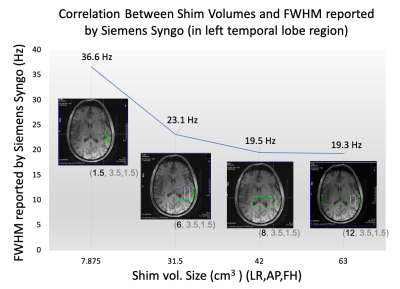 |
The Effect of Enlarging Shim Volume on B0 homogeneity of MRS Voxel on 7T
Huijun Liao1, Eduardo Jorge Uribe Coello1, Wufan Zhao1, Han Sam Jiang1, and Alexander Lin1
1Center for Clinical Spectroscopy, Brigham and Women's Hospital, Boston, MA, United States
B0 homogeneity is important for clinical spectroscopy but is highly region dependent and time consuming. Enlarging shim volume could be a quick and easy way to improve B0 homogeneity in the clinical practice of spectroscopy and the goal of this study is test if this method is beneficial. We used different methods to measure the potential improvement in B0 homogeneity in different brain regions. While our results showed that increasing shim volumes did not improve spectral linewidths or data quality, we demonstrate a robust method of measuring B0 homogeneity in clinical spectroscopy.
|
|
| Winner: Clinical - 1st Place E-Poster Presentation | |||
 |
S30. |
Depicting capsular injury and disc tears of the sternoclavicular joint with the use of direct MRI arthrography
Helen Harvey1
1MRI, Cambridge University Hospitals, Cambridge, United Kingdom Advances in technology in MRI have allowed for the improved spatial resolution of small joints like the sternoclavicular joint (SCJ). We have shown that through the use of arthrography and MRI we can provide better visualisation of SCJ anatomy, disc tears and other pathologies. Helping to increase knowledge and greatly improve treatment and surgical planning options for the patient. This presentation aims to understand the techniques for MRI arthrography of the SCJ, review anatomy demonstrated on SCJ arthrography and demonstrate common pathologies of the SCJ. |
|
| Winner: Clinical - 2nd Place E-Poster Presentation | |||
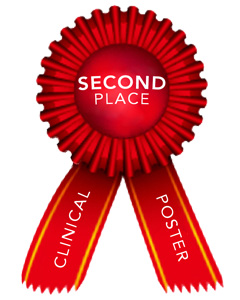 |
S74.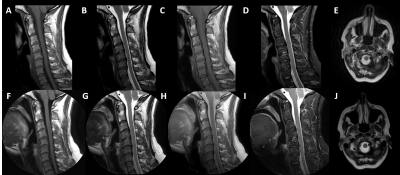 |
Optimization of Radial K-space Sampling Techniques for a Comprehensive Motion-free Cervical Spine MRI Protocol
Brian Johnson1, Jonathan Chia1, Dave Hitt1, Rob Lay1, Tom Lowe1, Michael Pawlak1, John Penatzer1, James Snicer1, Marcie Stopchinski1, Gregory Thomas1, Kristen Williams1, and Paul Worthington1
1Philips Healthcare, Gainesville, FL, United States
Consistent high-quality magnetic resonance imaging (MRI) of the cervical spine still remains challenging because of the inherent small anatomical structures and degradation of image quality due to motion artifacts1. Motion artifacts can arise from several sources including swallowing, respiration, cerebrospinal fluid (CSF) pulsation, blood flow, and bulk patient movement. MRI of the cervical spine is one the highest performed exams globally. Here we present a complete cervical spine MRI protocol utilizing 2D and 3D radial k-space sampling techniques which are inherently motion insensitive to increase image quality.
|
|
| Winner: Clinical - 3rd Place E-Poster Presentation | |||
 |
S39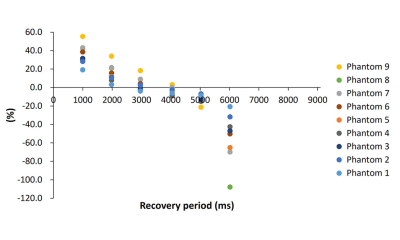 |
A Single Breath-Hold Acquisition of Three-Dimensional T1 Mapping Using Look Locker sequence for Assessing Crohn Disease: A Phantom Study Video Permission Withheld
Daisuke Morimoto-Ishikawa1,2, Tomoko Hyodo3, Shigeyoshi Saito2, Yu Ueda4, Masato Ohmi2, and Kazunari Ishii3
1Radiology Center, Kindai University Hospital, Osaka-Sayama, Japan, 2Department of Medical Physics and Engineering, Osaka University Graduate School of Medicine, Suita, Japan, 3Department of Radiology, Kindai University, Osaka-Sayama, Japan, 4Philips Japan, Tokyo, Japan
We investigated the single breath-hold three-dimensional (3D) Look-Locker (LL) sequence in nine different concentrations phantoms, which can be used to evaluate Crohn's disease (CD). Percentage errors between T1 relaxation time obtained by varying inversion recovery pulse interval and recovery period in the LL sequence and T1 relaxation time obtained by the Inversion Recovery sequence were calculated. With the combination of inversion recovery pulse interval of 7000ms and recovery period of 4000ms, the LL sequence can calculate T1 relaxation time within 10% percentage errors in the fastest imaging time of 21 seconds.
|
|
| Winner: Research- 1st Place Oral Proffered Paper | |||
 |
S34.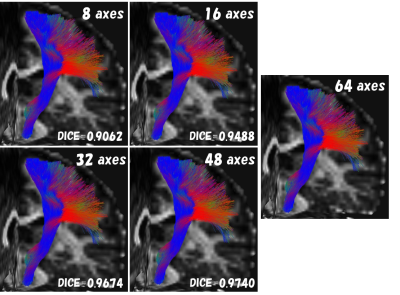 |
Effects of image quality deterioration and data shortage on automatic white matter bundle segmentation by diffusion magnetic resonance imaging
Yuichi Suzuki1, Tsuyoshi Ueyama1, Takahiro Iwasaki1, Jiro Sato1, Hideyuki Iwanaga1, and Osamu Abe1
1Department of Radiology, THe University of Tokyo Hospital, Tokyo, Japan
We investigated the effect of image quality deterioration and data shortage of DWI on automatic white matter bundle segmentation. We set the gold standard (GS) data without SMS and MPG = 64 axes. Two kinds of comparisons were made in comparison with GS data. The one was with/without the SMS, and the other eliminated some acquired data from GS. We analyze the data only from the first 8, 16, 32 and 48 axes of MPG in the GS. There was almost no difference between SMS of 2 and 3. For MPG, 16 axes provided results comparable to the GS.
|
|
| Winner: Research- 2nd Place Oral Proffered Paper | |||
 |
S90. |
Deep Inspiration Breath-Hold Radiotherapy does not induce MRI detectable LV functional and structural changes in patients with left-sided breast cancer – A six months follow-up
Xin Dong1,2, Arnold Ng3,4, Sharon Watson5, Harish Sharma5, Graham Galloway1,2,6, and Margot Lehman5
1Queensland University of Technology, Brisbane, Australia, 2Translational Research Institute, Woolloongabba, Australia, 3Cardiology, Princess Alexandra Hospital, Brisbane, Australia, 4University of New South Wales, Sydney, Australia, 5Radiation Oncology, Princess Alexandra Hospital, Brisbane, Australia, 6The University of Queensland, St Lucia, Australia
The usefulness of T1 and ECV mappings in the context of radiation cardiotoxicity has yet to be studied. In the current study, we conducted a longitudinal CMR study on 30 females with left-sided breast cancer before and after Deep Inspiration Breast Hold (DIBH) radiotherapy (RT). The results showed patients who were treated with DIBH RT had no CMR detectable functional or structural myocardial changes 6 months following RT treatment. This has important implications on the long-term cardiac health of the growing number of women who are surviving or living with breast cancer.
|
|
| Winner: Research- 3rd Place Oral Proffered Paper | |||
 |
S44.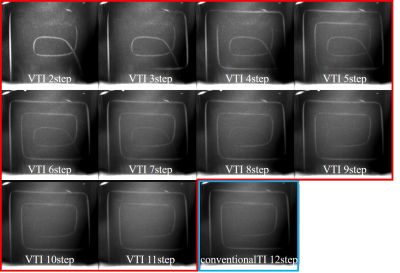 |
Optimization of Variable TI 4D ultrashort TE MR Angiography: A Numerical Simulation and Phantom Study
Toshiya Akatsu1, Haruyuki Fukuchi2,3,4, Kei Fukuzawa4, Nao Takano1, Yutaka Ikenouchi3, Michimasa Suzuki3, Kohji Kamagata3, Akihiko Wada3, Osamu Abe2, and Shigeki Aoki3
1Department of Radiology, Juntendo University Hospital, Tokyo, Japan, 2Department of Radiology, Graduate School of Medicine, University of Tokyo, Tokyo, Japan, 3Department of Radiology, Juntendo University Graduate School of Medicine, Tokyo, Japan, 4Department of Radiology, Toranomon Hospital, Tokyo, Japan
We implemented the new Variable TI method to multi-phase ASL 4D UTE-MRA in order to improve the visibility of hemodynamic flow. We performed a numerical simulation and a phantom study to find the optimized condition. It was found that a 50 % reduction of TI steps increases 50 % of signal from the flow volume without impairment of structural information.
|
|
| Winner: Research - 1st Place E-Poster Presentation | |||
 |
S19. | Optimizing dark blood late gadolinium enhancement in cardiac magnetic resonance imaging.
Hannah Bergman1, Alaine Berry1, and Ben Statton1
1MRC, Imperial College, London, United Kingdom
The dark blood late gadolinium enhancement technique has shown improved delineation of sub-endocardial infarcts by nulling both the blood pool and the normal myocardium. Optimal image quality and consistency depends on a number of factors, including gadolinium dose and the delay time before imaging. In this study we sought to determine whether gadolinium dose and delay time before imaging, affected the nulling of the blood pool and myocardium.
|
|
| Winner: Research - 2nd Place E-Poster Presentation | |||
 |
S7.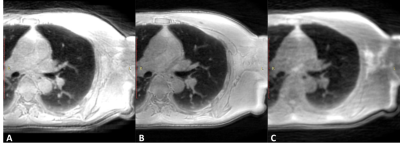 |
Optimized 3D ultrashort TE protocol for lung imaging
CHIKARA NODA1, Chia Ying Liu2, Jason Ortman1, Bharath Venkatesh Ambale3, Webster Stayman4, Yoshimori Kassai5, and Joao A.C. Lima1
1Cardiology, Johns Hopkins University, Baltimore, MD, United States, 2Canon Medical Research, Cleveland, OH, United States, 3Radiology, Johns Hopkins University, Baltimore, MD, United States, 4Biomedical Engineering, Johns Hopkins University, Baltimore, MD, United States, 5Canon Medical Systems Corporation, Otawara, Japan
3D radial Ultrashort echo time sequence is a promising technique for lung imaging but the protocol has not been optimized. We examined the parameters including number of trajectories and flip angles using a lung phantom. In-vivo images were obtained and evaluated based on the parameters optimized in the phantom study. UTE acquisition in axial rather than coronal direction produced better quality of images. Breath holding acquisition may be an option in case patients cannot tolerate long scan time.
|
|
| Winner: Research - 3rd Place E-Poster Presentation | |||
 |
S60. |
Osteoporotic vertebral fracture analysis with intravoxel incoherent motion: a preliminary study
Hiroyuki Takashima1,2, Rui Imamura1, Tsuneo Takebayashi3, Yasuhisa Abe3, Izaya Ogon2, Hiroshi Oguma3, Yoshihiro Akatsuka1, and Toshihiko Yamashita2
1Division of Radiology and Nuclear Medicine, Sapporo Medical University Hospital, Sapporo, Japan, 2Department of Orthopaedic Surgery, Sapporo Medical University School of Medicine, Sapporo, Japan, 3Department of Orthopaedic Surgery, Sapporo Maruyama Orthopedic Hospital, Sapporo, Japan
The parameters of vertebral fracture (VF) and without fracture using intravoxel incoherent motion (IVIM) were analyzed. In addition, the usefulness of using IVIM for VF was investigated. The subjects of this study were 52 patients with VF in the acute phase. As a result, the ADC, D, and f of VF were significantly higher than without fracture. Meanwhile, the D* of VF were significantly lower than without fracture. In the future, new findings may be obtained by analyzing the IVIM parameters and VF prognosis.
|
|
The International Society for Magnetic Resonance in Medicine is accredited by the Accreditation Council for Continuing Medical Education to provide continuing medical education for physicians.